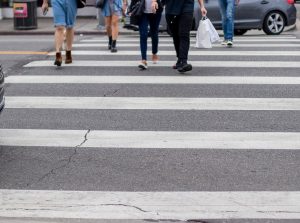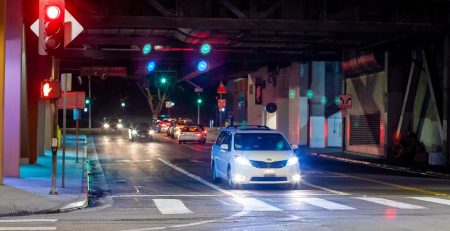Can Pedestrians Be At Fault for Crashes in Arizona?
Auto accidents aren’t always matters of two vehicles colliding—at times, a pedestrian is involved as well, which begs the question, can pedestrians be at fault for a crash? The answer is usually, yes, but the question of fault is ultimately a complex affair, one that’s best deciphered by an experienced Arizona auto accident attorney.
Pedestrian Rights and Responsibilities in Arizona
In Arizona, “pedestrians” include anybody walking on foot or using an assisted mobility device (such as a skateboard, powered or unpowered wheelchair, or other devices that aren’t bicycles); regardless of their exact mode of transportation, pedestrians are generally those who are expected to use sidewalks and crosswalks.
 Pedestrian’s protections and rights by law are quite extensive; this is because pedestrians have no standards and certifications to contend with, unlike motorists. It’s reasonable, for example, for a pedestrian, underaged or otherwise, to not fully understand crosswalk laws—however, a licensed driver has a legal responsibility to fully understand all relevant traffic laws, including those which relate to pedestrians:
Pedestrian’s protections and rights by law are quite extensive; this is because pedestrians have no standards and certifications to contend with, unlike motorists. It’s reasonable, for example, for a pedestrian, underaged or otherwise, to not fully understand crosswalk laws—however, a licensed driver has a legal responsibility to fully understand all relevant traffic laws, including those which relate to pedestrians:
- Pedestrians are protected by traffic laws and have functionally complete right of way in all scenarios. If a pedestrian is on the road for any reason, drivers in Arizona are expected to exercise due care, doing their best to yield to, and avoid, said pedestrian. Extra caution is to be taken if the pedestrian is a child or is otherwise clearly confused or impaired; neither type of pedestrian can be expected to protect themselves.
However, being protected by law does not absolve pedestrians from fault (with the exception of children and mentally impaired individuals). As any driver surely knows, pedestrians are extremely capable of causing accidents of their own accord, usually via negligent and unsafe behavior:
- Being willfully impaired. Children and individuals with mental health conditions are given special protection by law; however, those impaired by drugs or alcohol are not. Walking while impaired isn’t illegal in and of itself, but if a drunk individual stumbles out onto a street in an unsafe fashion, they are to blame if they failed to give drivers enough time to react and avoid them (or, if the driver did avoid them, but got into a separate accident as a result of veering out of the way). Texting or otherwise being a distracted pedestrian also constitutes willful impairment.
- Crossing recklessly and unreasonably. Pedestrians must make reasonable efforts to stay safe and not endanger their life. Darting into traffic, misjudging the speed of an oncoming car, or crossing at an unlit spot at night (thus making themselves invisible to oncoming traffic) constitutes reckless behavior, and will result in the fault being assigned to the pedestrian.
- Ignoring crosswalks, signals, and signs. Arizona’s jaywalking laws stipulate that pedestrians must yield the right of way unless they are using a crosswalk appropriately. However, note that it is not fundamentally illegal to cross a road where there is no crosswalk, provided that a functional intersection is not available in either direction.
Fault and Compensation for Arizona Pedestrians
Being partially at fault for an accident, even as a pedestrian, doesn’t bar you from receiving compensation altogether, thanks to something known as comparative negligence. Give the Arizona personal injury law firm at ELG a call today at (623) 877-3600 to talk to a local auto accident attorney who can help answer any questions you might have about pedestrians, liability in accidents, and the claims process as a whole.







